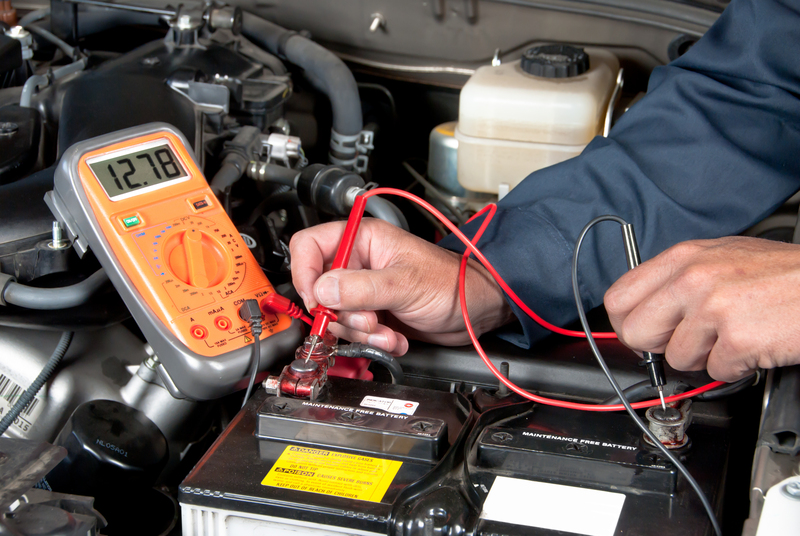Effective Strategies for Valuable Transport
Posted on 19/05/2025
Effective Strategies for Valuable Transport
Transporting valuable items is an intricate process that requires meticulous planning, robust security measures, and efficient execution. Whether it's transporting high-value goods, crucial documents, luxury vehicles, or priceless art, ensuring their safety and timely delivery is paramount. This article delves into effective strategies for valuable transport, offering insights into the best practices and advanced technologies in the field.
Understanding the Importance of Security
Security is the cornerstone of valuable transport. Without robust security measures, the risk of loss, theft, or damage increases significantly. Here are key strategies to enhance security:
- Risk Assessment: Before moving valuable items, conduct a comprehensive risk assessment. Identify potential threats, vulnerabilities, and the impact of a security breach. This helps in formulating a targeted security plan.
- Secure Packaging: Proper packaging is essential. Use tamper-evident and damage-resistant materials. For items like artworks or antiques, custom crating might be necessary. Ensure that the packaging materials are sturdy enough to protect against physical shocks.
- Tracking and Monitoring: Implement GPS tracking systems to monitor the transportation process in real-time. This not only helps in tracking the current location but also in responding quickly if any discrepancies are noticed.
- Secured Transport Modes: Opt for transport modes that offer enhanced security features. Armored vehicles for cash transit, sealed containers for sea transport, and trusted courier services for smaller but valuable items are some examples.

Efficient Route Planning
An efficient route planning strategy minimizes risks, cuts down on transit time, and contributes to timely delivery. Consider the following factors when planning routes:
- Direct Routes: Whenever possible, choose direct routes to minimize exposure time. Fewer stopovers or transshipments reduce the risk of theft or damage.
- Alternate Routes: Always have alternate routes planned. This provides flexibility in case of road closures, adverse weather conditions, or any other unforeseen circumstances.
- Traffic Patterns: Analyze traffic patterns to avoid congestion and delays. Using traffic management systems and predictive analytics can be highly beneficial.
- Geopolitical Factors: Be aware of geopolitical situations, especially when transporting items internationally. Political unrest, strikes, or conflicts can pose significant risks.
Insurance Coverage
Insurance is a critical component in the transport of valuable items. It provides a safety net against potential financial losses due to theft, damage, or loss. Here are some points to consider:
- Comprehensive Coverage: Ensure the insurance policy covers all types of risks associated with the transport, including theft, damage, loss, and delays.
- Valuation: Accurately declared value of the items being transported is crucial. Underestimating the value can lead to inadequate coverage and potential financial losses.
- Specialized Insurers: Choose insurers who specialize in high-value items. They have a better understanding of the unique risks involved and can offer tailored policies.
- Claims Process: Familiarize yourself with the claims process and documentation required. Having this knowledge helps in quick and smooth processing of claims if the need arises.
Technological Advancements
Technology plays a pivotal role in enhancing the safety and efficiency of valuable transport. Embracing technological advancements can significantly mitigate risks and streamline operations:
- Blockchain Technology: Blockchain provides a secure and transparent way to track the movement of valuable goods. It helps in maintaining an immutable record of transactions and movements, ensuring authenticity.
- Internet of Things (IoT): IoT devices can monitor environmental conditions, such as temperature and humidity, which is essential for the transport of sensitive items like artworks or pharmaceuticals.
- Enhanced Biometric Security: Use biometric authentication systems, such as facial recognition or fingerprint scanners, to ensure only authorized personnel can access valuable goods.
- AI and Machine Learning: These technologies can analyze vast amounts of data to predict potential risks and suggest optimal transport routes. They enhance decision-making processes, leading to safer transport.
Choosing Reliable Service Providers
Selecting a reliable service provider is crucial for the successful transportation of valuable items. The right provider brings a wealth of experience, a network of resources, and a commitment to security:
- Reputation and Experience: Choose providers with a proven track record in handling high-value transports. Research their history, client testimonials, and industry reputation.
- Comprehensive Services: Opt for providers that offer end-to-end solutions, including packaging, insurance, tracking, and delivery. This ensures a seamless and controlled process.
- Specialized Expertise: Depending on the nature of the valuable items, select providers with specialized expertise. For example, fine art transportation requires different handling compared to luxury vehicles.
- Transparent Communication: Ensure the provider maintains regular and transparent communication throughout the transport process. This builds trust and allows prompt action in case of issues.

Staff Training and Protocols
Well-trained staff and established protocols are vital for minimizing human error and enhancing security during transport:
- Regular Training: Conduct regular training sessions on security protocols, emergency procedures, and handling techniques. Keeping staff updated on the latest security measures is essential.
- Standard Operating Procedures (SOPs): Develop and enforce SOPs for every stage of the transport process. Clear guidelines ensure consistency and reduce the risk of errors.
- Background Checks: Perform thorough background checks on all personnel involved in the transportation of valuable items. This includes security personnel, drivers, and handlers.
- Emergency Response Plans: Have a well-defined emergency response plan in place. Train staff to handle various scenarios, including theft, accidents, and environmental hazards.
Conclusion
Effective strategies for valuable transport revolve around meticulous planning, robust security measures, and the integration of advanced technologies. By understanding the importance of security, efficient route planning, comprehensive insurance coverage, leveraging technological advancements, choosing reliable service providers, and ensuring staff training and protocols, you can mitigate risks and ensure the safe and timely delivery of valuable items. The landscape of valuable transport is constantly evolving, and staying abreast of the latest trends and practices is vital for continued success in this critical industry.







